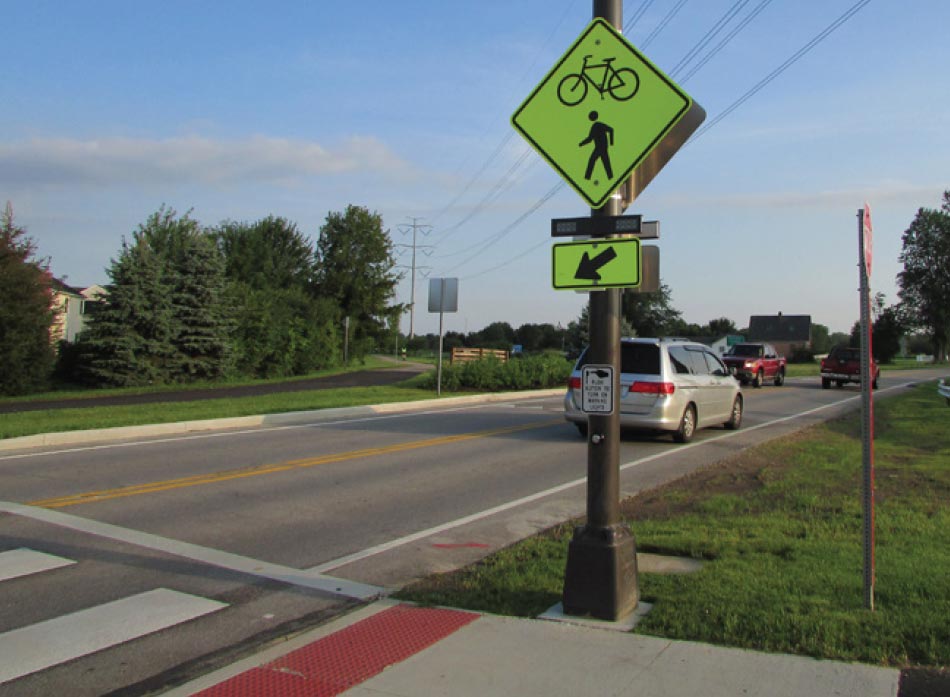 U.S. Department of Transportation
U.S. Department of Transportation
Federal Highway Administration
FHWA-SA-21-053
A marked crosswalk or pedestrian warning sign can improve safety for pedestrians crossing the road, but at times may not be sufficient for drivers to visibly locate crossing locations and yield to pedestrians. To enhance pedestrian conspicuity and increase driver awareness at uncontrolled, marked crosswalks, transportation agencies can install a pedestrian actuated Rectangular Rapid Flashing Beacon (RRFB) to accompany a pedestrian warning sign. RRFBs consist of two, rectangular- shaped yellow indications, each with a light-emitting diode (LED)-array-based light source.1 RRFBs flash with an alternating high frequency when activated to enhance conspicuity of pedestrians at the crossing to drivers.
Transportation agencies should refer to the Manual on Uniform Traffic Control Devices (MUTCD) for information on the application of RRFBs.1
Applications
The RRFB is applicable to many types of pedestrian crossings but is particularly effective at multilane crossings with speed limits less than 40 miles per hour.2 Research suggests RRFBs can result in motorist yielding rates as high at 98 percent at marked crosswalks, but varies depending on the location, posted speed limit, pedestrian crossing distance, one- versus two-way road, and the number of travel lanes.3 RRFBs can also accompany school or trail crossing warning signs.
RRFBs are placed on both sides of a crosswalk below the pedestrian crossing sign and above the diagonal downward arrow plaque pointing at the crossing.1 The flashing pattern can be activated with pushbuttons or passive (e.g., video or infrared) pedestrian detection, and should be unlit when not activated.
Considerations
Agencies should:2
- Install RRFBs in the median rather than the far-side of the roadway if there is a pedestrian refuge or other type of median.
- Use solar-power panels to eliminate the need for a power source.
- Reserve the use of RRFBs for locations with significant pedestrian safety issues, as over-use of RRFB treatments may diminish their effectiveness.
Agencies shall not:2
- Use RRFBs without the presence of a pedestrian, school or trail crossing warning sign.
- Use RRFBs for crosswalks across approaches controlled by YIELD signs, STOP signs, traffic control signals, or pedestrian hybrid beacons, except for the approach or egress from a roundabout.
Sources
1. Manual on Uniform Traffic Control Devices (MUTCD), Chapter 4L. FHWA, (2023).
2. ”Rectangular Rapid Flash Beacon“ in PEDSAFE: Pedestrian Safety Guide and Countermeasure Selection System. FHWA, (2013).
3. Fitzpatrick et al. ”Will You Stop for Me? Roadway Design and Traffic Control Device Influences on Drivers Yielding to Pedestrians in a Crosswalk with a Rectangular Rapid-Flashing Beacon.“ Report No. TTI-CTS-0010. Texas A&M Transportation Institute, (2016).
4. (CMF ID: 9024) NCHRP Research Report 841 Development of Crash Modification Factors for Uncontrolled Pedestrian Crossing Treatments, (2017).

